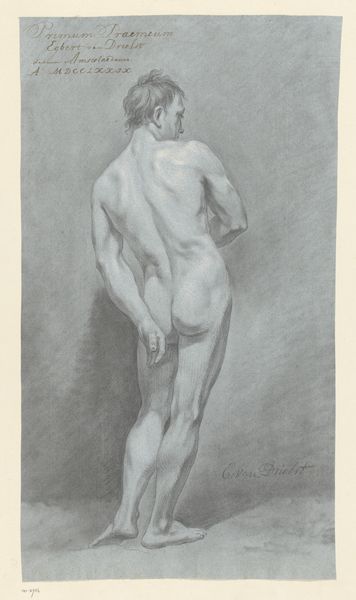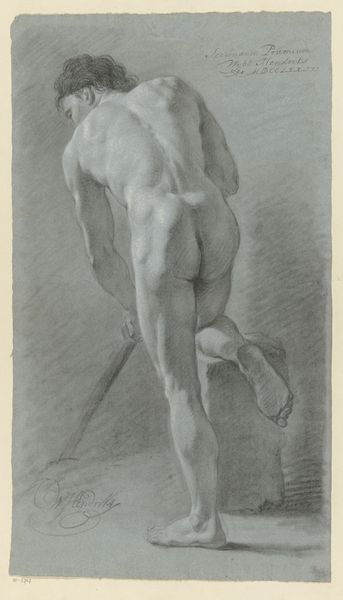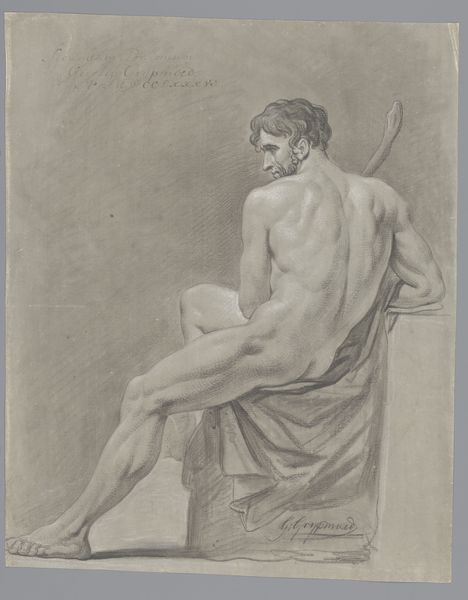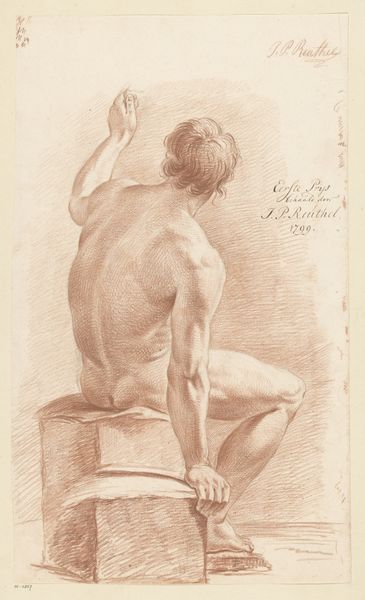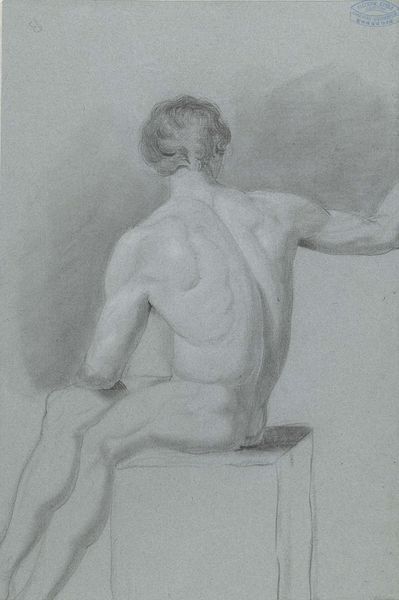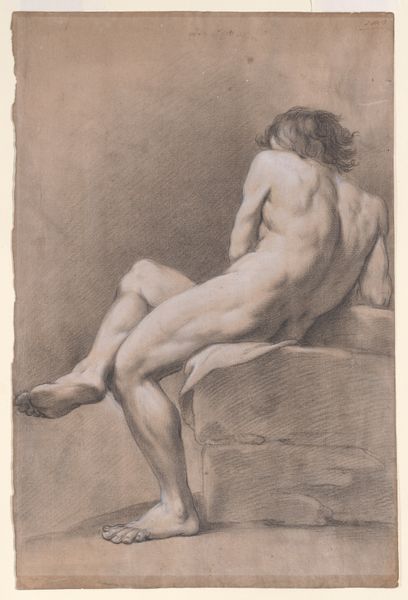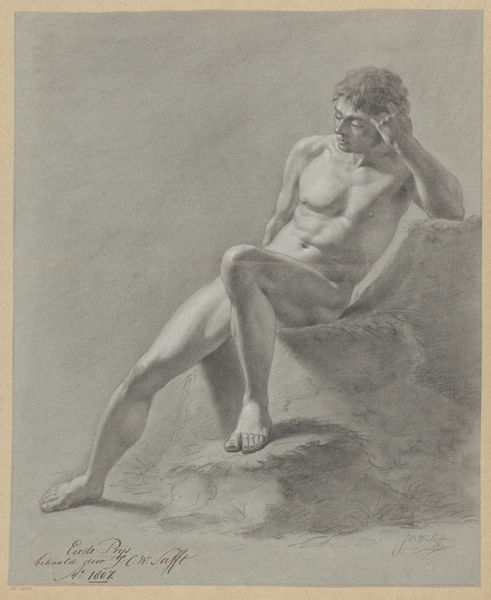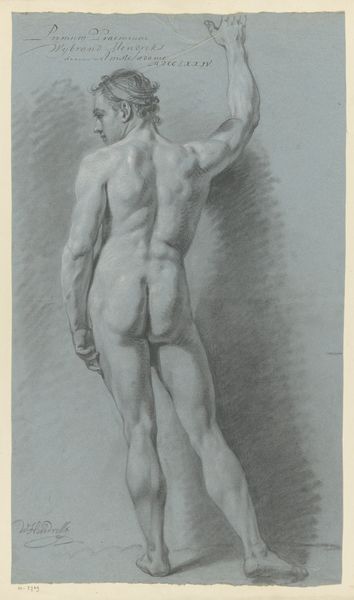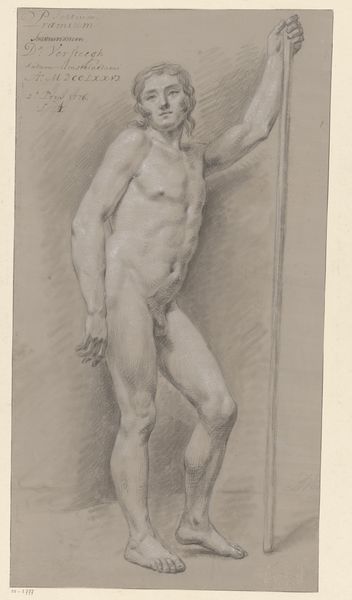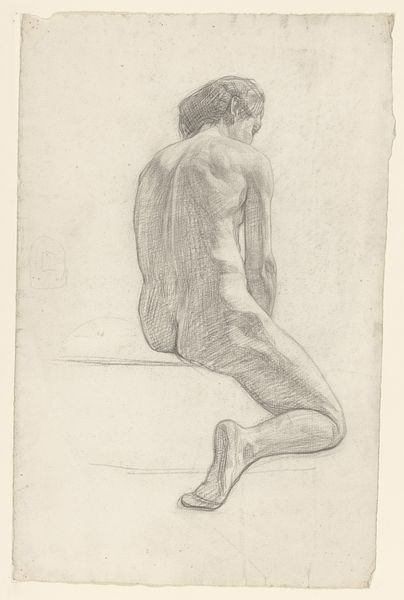
Zittend mannelijk naakt, op de rug gezien (2e prijs 1777) Possibly 1777
0:00
0:00
drawing, paper, pencil
#
portrait
#
pencil drawn
#
drawing
#
neoclacissism
#
pencil sketch
#
figuration
#
paper
#
pencil drawing
#
pencil
#
portrait drawing
#
pencil work
#
nude
Dimensions: height 490 mm, width 312 mm
Copyright: Rijks Museum: Open Domain
Egbert van Drielst created this chalk drawing, "Zittend mannelijk naakt, op de rug gezien" in 1777, as indicated by the writing at the top of the page. During the late 18th century, the male nude served as an idealized form, reflecting classical standards of beauty and strength. Yet, the averted gaze and contemplative posture of the figure subtly disrupts this tradition. It invites a reading beyond mere physical admiration, prompting questions about the figure's emotional state and inner life. Consider the cultural context of the Dutch Republic at this time. The emphasis on civic virtue and moral responsibility may have influenced the artist’s choices. This nude is not presented as a symbol of erotic desire but as a subject of study, perhaps embodying intellectual or philosophical pursuits. Van Drielst captures a moment of introspection, reflecting the shifting values and artistic interests of the late 18th century. It offers a glimpse into the complex interplay between classical ideals and emerging sensibilities.
Comments
No comments
Be the first to comment and join the conversation on the ultimate creative platform.
